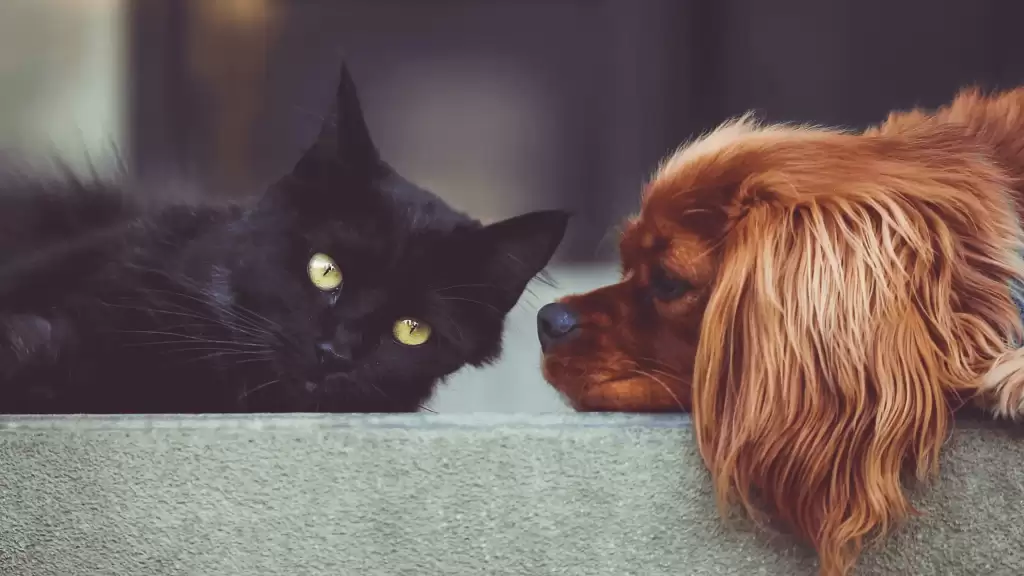If you are a pet owner, moving can be a challenging task as you not only have to worry about the logistics and packing but also must ensure the comfort and safety of your furry companions during the move. To make this process easy, we’ve put together a comprehensive guide with essential tips for moving with pets. These tips will guide you on how to prepare your pets for relocation and help them adjust to their new surroundings.
9 Tips for Moving with Your Pets
01. Prepare Your Pet for the Move
Before relocating, getting your pet prepared for the move is essential. If your pet lacks experience traveling by car, take them on short drives to acclimatize them to being in a vehicle for long hours. And in case, you plan to move pets by air, then make sure to research the airline’s pet policy and plan ahead of time. These changes will help pets adapt to the new environment and lower anxiety levels.
02. Update Your Pet's Identification
When relocating with your pet, updating the pet’s identity is essential. Check that the tags and associated microchips have updated contact details like address and phone number. Keeping key information about your pet during a move can help you reunite if they get lost.
03. Keep Your Pet's Routine
During the move, it’s important to maintain the pet’s routine as much as possible. Stick to their regular feeding and walking schedule and keep their familiar toys and bedding nearby. If you’re traveling long distances in a car, make sure to take frequent breaks. This will help them feel more comfortable during the move.
04. Pack a Pet Moving Kit
When moving pets to a new home, create a comprehensive pet moving kit that includes all the essential items pets need during the journey. This should consist of food, water, and any medications and supplements they require. Furthermore, don’t forget to pack their favorite toys and a blanket or bed to sleep on.
05. Arrange Pet-friendly Accommodation
When you are relocating with pets, ensure that pet-friendly accommodation is identified and located in advance. Do thorough research on available hotels and lodgings that allow pets and make sure the space provided is safe and secure for your beloved animals.
06. Get a Vet Checkup
Before you move, as a precautionary measure, take your pets to the veterinarian for a checkup. Make sure your pets are up to date on all their vaccinations and medications, that they are healthy and ready for the journey, and ask your vet for copies of their medical records.
07. Secure Your Pet During the Move
When the movers are at your home, it’s important to take extra precautions to ensure the safety and security of your pet during the move. Designate a specific room or area in your home where your pet can stay during the move. Let the movers know that you have a pet in the house and where they will be staying during the move. This will help them avoid any pet-related accidents.
It’s also essential to ensure the safety of your pet during the journey. The best way to keep them secure is using a pet carrier or a specially designed seatbelt for animals that can help you restrain them while you drive. Also, make sure that they are cushy in their seat or carrier and have plenty of space to stretch and move around if needed.
08. Introduce Your Pet to Their New Home Gradually
When you arrive at your new home, it’s important to introduce your pet to its new surroundings gradually. Take the time to explore the house together.
For dogs, who may experience anxiety or stress during a move, start by letting them explore one room at a time, and gradually introduce them to the rest of the house. Provide them with familiar items like their bed, toys, food, and water bowls. For cats, provide them with a secure and comfortable space to settle in, and gradually let them explore the rest of the house. For birds, allow them to get used to their new cage or perch before giving them more space to explore. And for small animals, provide them with a secure and familiar environment with all their essentials, and gradually introduce them to their new surroundings. By introducing your pet to their new home gradually, you can help them feel more comfortable and secure during the move.
09. Give Your Pet Extra Attention
Finally, it’s vital to shower your pet with ample affection and attention during the move. Taking a moment to engage in playtime, snuggles, and expressions of love can help them feel secure and content in their new surroundings. Providing extra care and attention during this transitional phase is key to ensuring a seamless transition for both you and your pet.
Tips for Moving with Different Types of Pets
Moving with different types of pets can require specific considerations. Here are some additional tips for moving with dogs, cats, birds, and small animals.

Moving with Dogs
Dogs are social creatures and may experience some adjustment challenges during a move. To help your dog feel cozy and at ease, it’s important to maintain their regular routine, including feeding, walking, and playtime. During transportation, keeping your dog safely secured in a carrier or seatbelt harness is recommended, ensuring their safety, and reducing any potential discomfort.
Moving with Cats
Cats are creatures of habit and can get unsettled with changes in their environment. But moving them to a new home can be a positive experience with the right approach. Start by giving them a familiar and secure space to settle in and gradually introduce them to the rest of the house. Use a safe carrier during transport and provide them with a litter box and fresh water for a comfortable journey.
Moving with Birds
To ensure a smooth and safe move for your feathered companions, it’s important to prioritize their well-being. Birds can become agitated or stressed during a move, especially if they are not used to being in a carrier or travel cage. Covering their cage securely and including familiar items like food and water bowls, perches, and toys can create a reassuring environment. Additionally, maintaining appropriate temperature and humidity levels during transportation can help ensure a safe and pleasant journey.
Moving with Small Animals
Tiny animals like rabbits, guinea pigs, and hamsters may become scared and anxious when traveling, so it’s important to make their journey as relaxing and enjoyable as possible. To do this, provide them with a secure carrier or travel cage that includes familiar items like food, water, and bedding. It’s also a good idea to pack a first-aid kit specifically designed for small animals in case of any injuries or emergencies during the move. By taking these steps, you can help ensure that your little companion feels safe and content throughout the journey.
By following these tips, you can help ensure that your pets stay healthy and happy during the move and that you all settle into your new home smoothly. Remember to plan, stay organized, and take the necessary steps to secure their safety and well-being during the move. With a little bit of patience and care, you can make the moving experience a positive one for both you and your beloved pet.

